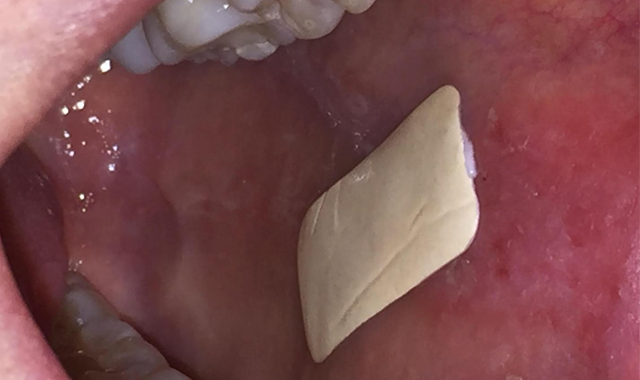A better way to treat mouth ulcers
Why this patch could be the future of ulcer treatment.

Oral lesions and ulcers are common, and painful, conditions. Treatments are available, but most have been ineffective. However, researchers believe they have an answer - a patch able to stick to directly to the affected area.
Two of the most common causes of oral lesions, affecting one to two percent of the population, are oral lichen planus (OLP) and recurrent aphthous stomatitis (RAS). Most current treatments rely on techniques that cover the entirety of the mouth, since targeted therapy is tough with the extreme conditions present in the mucous membrane.
Related article: Study confirms water fluoridation prevents tooth decay in children and teens
However, as Dr. Craig Murdoch of the University of Sheffield's School of Clinical Dentistry explains, that whole-mouth approach is often ineffective. "Current treatments consist of using steroids in the form of mouthwashes, creams or ointments, but these are often ineffective due to inadequate drug contact times with the lesion,” he says.
To combat this, researchers at Sheffield teamed up with Dermtreat A/S, a biotechnology company based in Copenhagen. Together, they have developed the Rivelin® patch, a biodegradable, muco-adhesive patch that can be applied directly to the mucous membrane.

The patch uses special polymers that enable it to stick even in a moist environment. Once applied, it delivers a steroid, clobetasol in the current formulation, directly to the lesion or ulcer. This delivers the medication where it is most needed, eliminating the shotgun approach of other treatment methods. Additionally, the patch also creates a barrier, potentially increasing the rate of healing. "The patch acts like a plaster inside your mouth,” says Murdoch, “which means it is very effective at directly targeting the specific area as well as forming a protective barrier.”
The patch can reportedly remain in place for up to two hours, due to its flexibility and strong adhesion. Because it provides targeted delivery of a medication, researchers also claim that it enables higher efficacy, lower dosing and lower toxicity to the non-affected parts of the oral cavity.
Murdoch adds that “Patients who have trialed the patch found it to be very comfortable to wear and they were really pleased with the length of adhesion which makes it particularly effective and efficient."
The patch recently began a Phase 2b trial, and Dermtreat is hopeful it will progress quickly through trials and be available for consumers. “Based on the high unmet medical need and the interest we’ve seen from leading physicians and specialists in the field, we anticipate efficient study enrollment and expect results in the first half of 2019,” says Nishan de Silva, MD, chief executive officer of Dermtreat.
Related article: Osteoporosis meds and implants are a bad combination
Dermtreat is working with the Dental School to develop the next generation of patches, capable of delivering a variety of other medications.
University of Texas Health Science Center San Antonio to Launch Center for Regenerative Sciences
June 17th 2024The center aims to translate preclinical discoveries into therapies for dental and craniofacial diseases, leveraging the school’s expertise in stem cell-based treatments and 3D printing technologies.